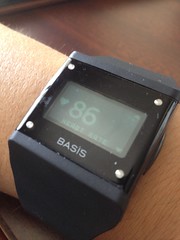Last year I ordered a Samsung ARM Chromebook to test out as a developer device. The appeal would be a portable low/minimal maintenance low-power device I could use mainly for terminal/browsing work (I tried that unsuccessfully a couple years ago with a Toshiba AC100).
Unfortunately, it turned out the Samsung had poor battery life and a worse screen. Making it useful (a shell with vim and git) required dev mode (CTRL-D every time booting) and either installing chrubuntu, which had power/input issues, or a then very immature crouton (it’s now much better). The Chromebook didn’t do anything better than my MBA and had some significant drawbacks for development. The screen/performance also was a hinderance for general browsing/reading (my iPad was much better for that). A coworker eventually took the Chromebook home and found it useful/pleasant enough for that purpose though, so YMMV.
Given that experience, why buy another Chromebook? Well, it turns out one of the more annoying features, the secure booting, is actually fantastic when you’re worried about infosec when traveling. For an upcoming trip, I wanted a bulletproof system to be able to do basic browsing/web tasks and for copying (and maybe editing?) photos without worry.
There are a few new Chromebooks coming out, and I was looking at the HP Chromebook 11, which has a slick design, a great IPS screen and neat features like micro-USB charging, but I ended up going w/ the C720 due to the much better processor (Haswell Celeron w/ 4GB RAM vs Exynos 5250 w/ 2GB RAM), SD card reader, USB 3.0, and most significantly, the much better battery life (9h vs 5h).
It’s a shame that these ARM Chromebooks have such poor battery life when when compared to their tablet brethren using the same SoCs, but what can you do.
It’s still early going, but here’s what I can report:
- The C720 is definitely much peppier, and browsing (scrolling, multiple tabs, YouTube) is smooth where w/ the Samsung ARM Chromebook, it was not, so that was a good call
- Battery-life seems to be living up to its promise. I haven’t used it enough to run it down, even while installing software. It sleeps and wakes up well
- The screen, an 11.6″ 1366×768 matte TN screen isn’t terrible (it’s brighter and a bit better to my eyes than the Samsung ARM Chromebook), but the blacks/contrast are mediocre at best and using the default black terminal and white web pages isn’t very comfortable, although w/ some tweaking I’m sure it’ll be workable
- There’s now a file browser which means that I can copy photos from SD card to a USB 3.0 external drive, but I haven’t explored actually doing photo editing much. I doubt there’s anything with built in RAW support though, so I believe I’ll end up having to run in developer mode to install LibRaw, digiKam, or RawTherapee.
- As mentioned, crouton is much improved, although I still wouldn’t pick a Chromebook as my first choice for development. Working in a Secure Shell window, I’m still missing basic stuff like having a decent clipboard, although the fix may be to succumb to running a full X/WM setup.
- Although less secure in dev mode, you can still get some boot protection w/ verified boot with shell access. Just make sure that you have some good passwords for sudoing/your chroot. You might find reading the Chromium OS Security Overview to be worth reading. (In general, the design docs actually make for pretty interesting reading)
- I’ve yet to setup my proxying/pac files, but you can see what I’m planning on my security plan page. (better safe than sorry)
Reference:
- Acer Chromebook C720 vs. HP Chromebook 11: What’s the deal? – detailed spec comparison
- The Verge reviewed both the HP Chromebook 11 and the Acer C720 Chromebook. They liked the C720 significantly more.


 I had preordered a
I had preordered a 